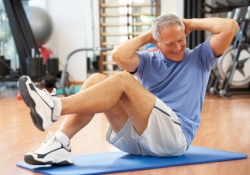 This article is courtesy of The American College of Sports Medicine and Kaiser, please leave your comments below…..
This article is courtesy of The American College of Sports Medicine and Kaiser, please leave your comments below…..
The American College of Sports Medicine and Kaiser Permanente released a new official recommendation today, calling for health care professionals to assess patients’ level of physical activity using the Physical Activity Vital Sign (PAVS) at every medical appointment as a key measure of general health. The paper was published in the May/June issue of Current Sports Medicine Reports.
“The time is right to incorporate physical activity assessment and promotion into health care in a manner that engages clinicians and patients,” said Robert E. Sallis, M.D., FACSM, lead author of the journal article, and a Kaiser Permanente physician practicing in Southern California. “This call to action challenges current and future clinicians and the health care community to implement a PAVS in daily practice with every patient.”
Physicians in health systems who have implemented the PAVS ask patients simple questions about frequency and duration of their typical physical activity, allowing the clinician to engage in counseling specific to the patient’s individual situation and/or refer patients to resources in the community. The authors recommend strategies for implementing the PAVS, include providing information for both undergraduate and graduate medical students during their coursework, as well as offering continuing education opportunities about the PAVS, aligning with existing initiatives, and collaborating with major stakeholders.
“It is our hope that this paper will be a catalyst for systemic change as part of a comprehensive transition from treating chronic diseases to disease prevention and a culture of health and wellness,” said Dr. Sallis.
The article published today is an outcome of a joint consensus meeting held by the American College of Sports Medicine and Kaiser Permanente in April 2015 which included representatives from several different medical organizations. This paper represents a summary of the discussion, recommendations and next steps developed during the consensus meeting.
